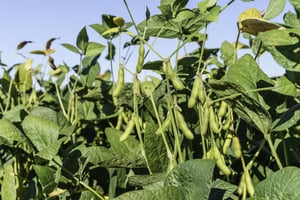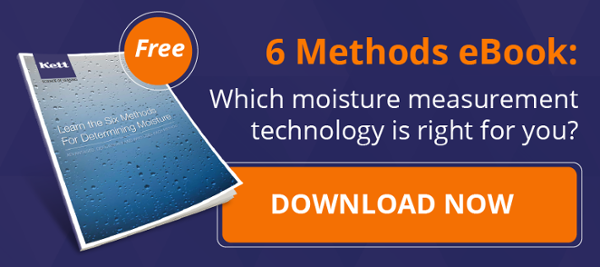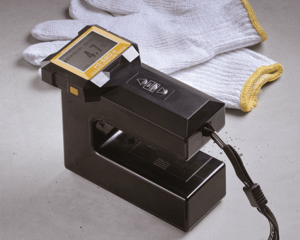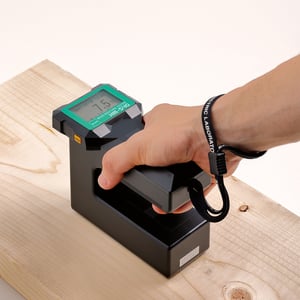 The temperatures are cooling, the leaves are changing, and football is back on television; the signs of Fall are everywhere. With the changing of the season, it’s also time to plan for your Fall harvest, which can be a complicated, time-intensive process.
The temperatures are cooling, the leaves are changing, and football is back on television; the signs of Fall are everywhere. With the changing of the season, it’s also time to plan for your Fall harvest, which can be a complicated, time-intensive process.
One of the best ways to ensure that the harvest process goes off without a hitch? Using a moisture meter every step of the way to monitor moisture levels and protect your crop from damage due to too much, or too little moisture content.
Moisture Levels at Harvest Time
How can you be sure it’s time to harvest? Crops must be harvested at the proper moisture level to optimize the quality and the market value of your yield. This is where a moisture meter comes into play. Fall can be a notoriously rainy, wet season, and using a moisture meter provides you with the information you need to harvest at exactly the right time.
Soybeans are a great example of a crop that needs to be harvested at the perfect time. They typically dry in the field, and they should be harvested when the beans are within their optimal moisture range between 13 and 15 percent. Too dry, and the beans can become brittle and run the risk of splitting during drying and handling. Plus, beans that are too dry weigh less. Since crops are sold by weight, a lower weight means a slimmer payday.
And what happens if the soybeans have too much moisture? Threshing can become a very difficult process, and beans can become bruised and damaged - especially when the moisture level is above 18 percent.
Artificial Drying of Your Crops
If you are planning on double cropping, or if you’ve been forced into planting late due to a particularly wet or cold spring (much like the one we had last year), changing Fall weather may mean that you have to artificially dry your crop yield to allow for maximum growing time in the field before frost has a chance to take hold of your crops. This means there is little time for grains to dry naturally before they are harvested.
If this is the case and you need to dry your crops artificially, then you have an undeniable need for a moisture meter to closely monitor this process and protect your crops from under-drying or over-drying - both of which can have a major impact on your crop yield and your pocketbook. You can maximize your profits by growing multiple crops, and dry them to their correct moisture levels, but only if you have a reliable moisture meter to help you along the way. The KB30 On-Line Moisture Meter can read moisture levels using quick-refresh NIR technology as the crops are dried on a belt dryer. This allows you to optimize drying without adding any manpower.... saving you energy, maximizing dryer throughput, ensuring consistent quality and, again, maximizing your crop yield and profitability.
During the harvesting and drying of your crops, the crops are transported to be dried and stored. These times of transport are a great opportunity to get a close look at the moisture levels, and carefully monitor the drying process. Our PM650 portable advanced moisture meter has 150 seed and grain calibrations and allows your team to instantly measure the moisture. Our unique KJT130 takes simplicity a further step, providing portable measurement without contact with the product... simply point and shoot and the moisture value is instantly displayed.
Are your crops moving quickly, or hard to reach? The KJT270F NIR Composition Meter is another perfect instrument for this process, as it has a fiber-optic probe that allows for testing within spray dryers, pneumatic and vacuum conveying, and other hard to reach places. This allows you to monitor the moisture levels through every step of the drying process.
Preparing for Storage
One of the biggest, most important tasks during Fall harvest? Preparing grains for proper storage. Since grains must be dried to just the right moisture level to last through a storage period, having a moisture meter on hand is key to successfully storing grain.
Whether you are planning to store grain for a short amount of time, or long-term, keeping grain at the correct moisture level and temperature means you can trust your crop to stay viable - and sellable. It’s the best thing you can do to protect your investment and your hard work.
Taking necessary steps to protect your crops for storage include regular monitoring of both temperature and moisture levels of these crops, as well as providing constant aeration to keep cool air moving through the storage bins.
The best way to ensure moisture levels don’t climb too high, putting your crop in danger of spoilage? With a grain moisture meter, which provides instant readings, so you have the feedback you need to protect your harvest from moisture damage and spoilage.
Want to protect your harvest and be sure you have the best possible crop yield, stored as safely as possible? Use a quick, accurate moisture meter and take the guesswork out of your Fall harvest. Get in touch with us today to find out which moisture meter is best for you, and to discover even more ways your moisture meter can make a huge difference in your growing season.



